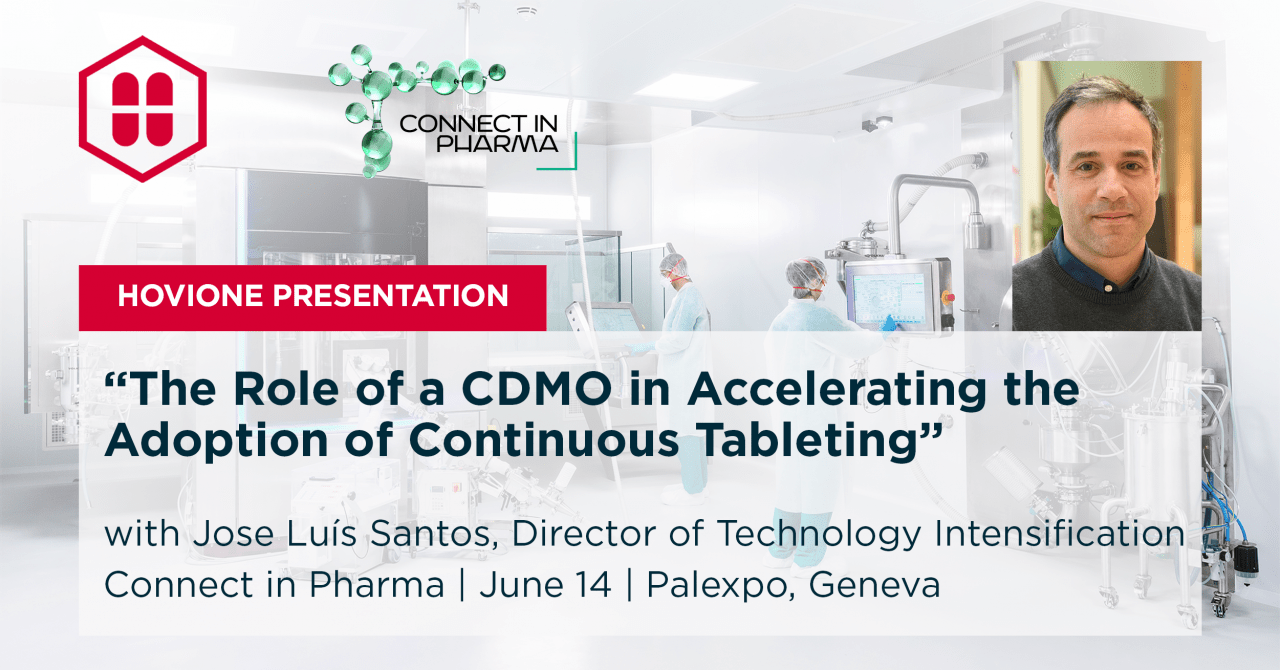Press Room
Connect in Pharma 2023

Hovione presenting at the upcoming “Connect in Pharma” in Geneva.
Connect in Pharma drives innovation, business, and new partnerships in four key areas: Innovative packaging, drug delivery systems, CMO/CDMO, and filling & assembling processes, supporting pioneers in the pharma and biopharma industry. With conferences, workshops and curated networking “Connect in Pharma” offers a platform to drive innovation and solve challenges.
On June 14, José Luís Santos, Director of Technology Intensification will host a session on “The Role of a CDMO in Accelerating the Adoption of Continuous Tableting” and will join a group of experts during a panel discussion on the topic of “Continuous Manufacturing of solid dosage forms: state of the art and future advances”.
Session | The Role of a CDMO in Accelerating the Adoption of Continuous Tableting
Wednesday 14 June, 2:00 PM - 2:30 PM (Theatre 2)
The application of continuous tableting (CT) is steadily developing a foundation in the pharmaceutical industry. Large pharma organizations have been at the forefront of adoption due to their evolving development pipelines that justify the technological disruption. However, systemic application of CT requires more than individually owned installations and can only be achieved with the partnership of the health authorities, equipment vendors, and contract development and manufacturing organizations (CDMOs).
A CDMO role is particularly important for the adoption of emerging technologies such as CT, in that an equipment standard needs to be established where most of the industry can seamlessly integrate with their own development, manufacturing, and supply chains. The processes and knowledge of owning and operating the technology must be broad, yet robust, to assure that the benefits outweigh the perceived risks by a meaningful margin.
This talk will focus on the key areas that require attention for the adoption of CT by the industry, and how at Hovione we are setting ourselves up for successful deployment of the technology.
Panel Discussion | Continuous Manufacturing of solid dosage forms: state of the art and future advances
Wednesday 14 June, 3:30 PM - 4:00 PM (Theatre 2)
We look forward to seeing you in Geneva.
Find out today if Continuous Tableting is right for your product.
Connect with our experts and get to know more about the distinct set of features and advantages that allows going from development to manufacturing in record time with high quality and less variability.
Let’s discuss your project together.

Find more about Connect in Pharma.

